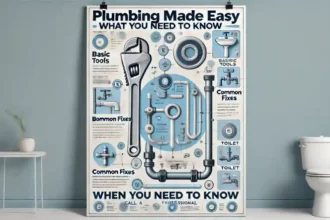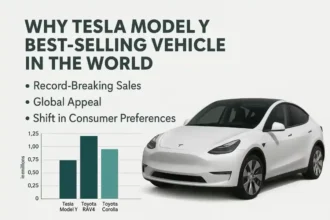Driving a street legal dune buggy opens up a world of possibilities. These rugged, off-road machines can become versatile vehicles for commuting, cruising highways, or running errands once they meet road-use regulations. Making your buggy street legal not only enhances its usability but also boosts its value and ensures you avoid fines or legal issues.
This guide covers everything you need to know, from installing safety equipment and meeting emissions standards to navigating state-specific regulations. Whether you’re in California, Texas, New York, or even the UK, we’ll help you understand the requirements and guide you through the process step by step.
By the end, you’ll have the knowledge to transform your dune buggy into a compliant, road-ready vehicle. Plus, we’ll tackle common questions like:
- Are dune buggies street legal in New York?
- How to make a dune buggy street legal in Ohio?
- Do you need a license to drive a dune buggy in Dubai?
- Is a dune buggy street legal in Texas?
- Are dune buggies street legal in California?
- Are dune Buggies street legal UK?
- Dune buggy 3 laws to make it street legal 2021
Let’s get started and unlock the full potential of your dune buggy!
Understanding the Basics
What Does “Street Legal” Mean for a Dune Buggy?
Making a dune buggy street legal means modifying it to comply with the laws required for public road use. These vehicles, originally designed for off-road adventures, must meet specific safety, technical, and environmental standards to legally share the road with other cars.
A street legal dune buggy needs features such as headlights, brake lights, turn signals, mirrors, and proper tires. These additions ensure it meets the same safety benchmarks as standard road vehicles. It’s not just about compliance; these features also make your buggy safer and more reliable when driving on highways or in traffic.
Why Make Your Dune Buggy Street Legal?
The benefits of a road-ready dune buggy go beyond just legality. Here’s why it’s worth the effort:
- Expanded Use: You can drive your buggy on public roads, from city streets to scenic highways.
- Increased Value: A street-legal buggy is more versatile and has a higher resale value.
- Peace of Mind: Avoid fines, impoundment, and the frustration of being restricted to off-road trails.
On the flip side, neglecting to comply with road-use laws can lead to fines, confiscation, or even legal issues, depending on where you live. Modifying your buggy now saves you from bigger problems down the line.
Off-Road vs. Street Legal: What’s the Difference?
An off-road dune buggy is typically built for rugged terrain and adventure. It’s lightweight, maneuverable, and equipped for dirt paths, sand dunes, or rocky trails. However, these features alone aren’t enough for public roads.
A street legal buggy includes:
- Safety Features: Seat belts, windshields, and functional mirrors.
- Lighting Systems: Headlights, taillights, and turn signals visible to other drivers.
- Compliance with Laws: Proper registration, insurance, and emissions certifications.
Think of it as upgrading your buggy from a trailblazer to a versatile all-terrain vehicle capable of handling both rugged dunes and smooth highways.
By understanding the basics of what it takes to make a dune buggy street legal, you’re already on the road to transforming your vehicle into a safe, compliant, and road-ready ride.
Legal Requirements: The Essentials
To make your dune buggy street legal, you’ll need to ensure it meets specific requirements that make it safe and compliant for public roads. These regulations vary by state or country, but certain features are universally necessary to ensure your buggy is road-ready. Let’s break it down.
Safety Equipment Checklist
A street-legal dune buggy must include several safety features to protect both you and other drivers. These modifications are essential:
- Seat Belts: Install seat belts for every occupant. They’re mandatory in most states for safety compliance.
- Windshield: Add a windshield made of DOT-approved safety glass to shield against debris and improve visibility.
- Mirrors: Equip side mirrors and a rearview mirror to ensure you can see your surroundings.
- Lights: Your buggy must have:
- Headlights for nighttime driving.
- Brake lights to signal stops.
- Turn signals for lane changes and turns.
- A license plate light for proper visibility of your registration.
- Horn: A working horn is required to alert other drivers or pedestrians.
These upgrades not only meet legal standards but also make your buggy safer for everyday road use.
Emissions and Environmental Standards
To legally drive on public roads, your dune buggy must comply with local emissions regulations. This can be a significant hurdle, especially for older or custom-built vehicles.
- Emissions Testing: In many states, your vehicle must pass emissions tests to ensure it meets air quality standards.
- Catalytic Converters: If your buggy doesn’t have one, you may need to install a catalytic converter to reduce harmful emissions.
- Eco-Friendly Options: Consider converting your buggy to an electric vehicle or installing other eco-friendly upgrades to simplify emissions compliance.
Pro Tip: Check with your state’s Department of Motor Vehicles (DMV) for detailed emissions requirements in your area.
Vehicle Identification Number (VIN)
Every street-legal vehicle needs a Vehicle Identification Number (VIN) for registration. If your dune buggy is custom-built or doesn’t have a VIN, you’ll need to apply for one.
- Why It’s Important: The VIN is used to track registration, insurance, and inspections.
- How to Get a VIN: Contact your local DMV or transportation office for guidance. This may involve an inspection of your buggy to confirm it meets safety standards.
A valid VIN is essential for registering your buggy and legally driving it on public roads.
Read: What is 鲁Q 669FD? Exploring Innovation and Controversy
Registration and Insurance
Once your dune buggy is equipped with the required safety features and emissions-compliant, it’s time to handle the paperwork:
- Registration: Submit proof of ownership, inspection certificates, and any necessary documentation to your local DMV.
- Insurance: Obtain liability insurance for your dune buggy. Specialty vehicle insurance providers can offer tailored policies for custom or modified buggies.
By addressing these legal requirements, you’ll take a significant step toward making your dune buggy compliant with road-use laws. With the right safety equipment, emissions compliance, and paperwork, you’ll soon be ready to hit the road legally and confidently.
Location-Specific Regulations
While the core requirements for a street legal dune buggy are similar everywhere, the specific regulations can vary significantly depending on where you live. Understanding these regional differences is crucial to ensure your vehicle meets all local laws.
Are Dune Buggies Street Legal in Specific Locations?
Let’s explore the requirements in some popular areas:
New York
- Emissions Testing: New York has strict emissions standards. Your buggy must pass a safety and emissions inspection.
- Safety Features: Ensure all required features like mirrors, lights, and horns are properly installed.
- Registration: You’ll need to register your buggy as a passenger vehicle or custom car.
Ohio
- Inspection Process: Ohio requires a detailed inspection for custom or modified vehicles. Make sure your buggy meets all safety standards.
- Title Requirements: You must apply for a title if your buggy doesn’t already have one, which may involve obtaining a VIN.
- Documentation: Provide receipts for parts used in building or modifying your buggy.
Dubai
- License Requirements: You’ll need a valid UAE driving license to operate a dune buggy on certain public roads.
- Road Restrictions: Some areas allow dune buggies, but they are mostly restricted to off-road zones unless specifically modified.
- Safety Gear: Helmets and additional protective gear may be required depending on the location.
Texas
- Lighting Standards: Texas emphasizes proper lighting for visibility, including headlights, brake lights, and turn signals.
- Insurance: Liability insurance is mandatory for all street-legal vehicles in Texas.
- Inspection and VIN: Your buggy must pass a vehicle inspection, and if it lacks a VIN, you’ll need to apply for one.
California
- Emissions Compliance: California has some of the strictest emissions regulations in the U.S., requiring compliance with CARB (California Air Resources Board) standards.
- Smog Check: Your buggy must pass a smog check unless it qualifies for an exemption (e.g., older vehicles or electric conversions).
- Registration Categories: Register your buggy as a custom or specialty vehicle to meet California’s legal requirements.
United Kingdom
- Roadworthiness Tests: In the UK, your buggy must pass an Individual Vehicle Approval (IVA) test to ensure it’s roadworthy.
- Insurance: A unique insurance policy is required for custom or kit vehicles.
- Number Plates and MOT: Once registered, your buggy must display number plates and pass an annual MOT test.
Dune Buggy 3 Laws to Make It Street Legal (2021 Update)
No matter where you live, these three core factors are key:
- Safety Modifications: Install seat belts, lights, mirrors, and other required equipment.
- Emissions Compliance: Pass inspections and retrofit your buggy if needed.
- Registration and Insurance: Register your buggy with the appropriate authority and secure liability insurance.
Tips for Navigating Local Laws
- Contact Your DMV or Local Authority: Regulations can vary even within states or regions. Confirm your local requirements before starting modifications.
- Use Local Forums: Join online communities or car clubs in your area for insights and advice from other owners.
- Keep Records: Document every modification, including receipts and photos, to simplify inspections and registration.
By understanding the location-specific regulations for your dune buggy, you’ll avoid unexpected roadblocks and ensure a smoother path to compliance. Whether you’re driving in New York, California, or overseas, knowing the laws will set you up for success.
Navigating the Paperwork
Once your dune buggy is outfitted with the necessary safety features and meets emissions requirements, the next step is handling the paperwork. Proper documentation ensures your vehicle is legally registered, insured, and ready for public roads.
Registration and Titling
To legally operate your dune buggy on public roads, you must register it with your local Department of Motor Vehicles (DMV) or equivalent authority. Here’s how to navigate the process:
Gather Required Documents:
- Proof of ownership (e.g., bill of sale or manufacturer’s certificate).
- Receipts for parts and modifications, especially for custom builds.
- Inspection certificates, including safety and emissions tests.
- A valid VIN (Vehicle Identification Number), either existing or newly assigned.
Apply for a Title:
- If your dune buggy is a custom build or doesn’t already have a title, you’ll need to apply for one. This often involves submitting detailed records of your modifications and passing an inspection.
State-Specific Considerations:
- Some states require special registration categories, such as “custom-built vehicles” or “kit cars.”
- For example, in California, you may need to register your buggy under the Specially Constructed Vehicle (SPCNS) program.
Pay Fees:
- Registration fees can vary widely by state. Budget for title application, registration, and potential inspection costs.
Insurance Coverage
Insurance is a critical part of making your dune buggy street legal. Here’s what you need to know:
Liability Insurance: Most states require liability insurance to cover potential damages or injuries caused while driving your dune buggy.
Specialty Vehicle Insurance: Custom or modified dune buggies often need specialty policies. These are tailored to non-standard vehicles and can include comprehensive or collision coverage.
Tips for Finding Coverage:
- Work with insurance providers who specialize in insuring custom, kit, or specialty vehicles.
- Provide detailed documentation of your buggy’s modifications and features to help insurers assess its roadworthiness.
Costs to Expect: Insurance premiums for dune buggies are typically higher than standard vehicles due to their unique build and usage. Comparing quotes from multiple providers can help you find the best deal.
VIN Verification
If your buggy doesn’t already have a VIN, obtaining one is essential for registration. The process typically involves:
- Vehicle Inspection: A DMV officer or authorized inspector will examine your buggy to confirm it meets safety standards.
- VIN Assignment: Once approved, a VIN plate will be issued and must be securely attached to your vehicle.
Tips for a Smooth Paperwork Process
- Be Organized: Keep all your documents in one place, including receipts, inspection reports, and proof of ownership.
- Double-Check Requirements: Verify your state’s specific paperwork and fees to avoid delays.
- Ask for Help: If you’re unsure about any part of the process, consult your local DMV or online communities for guidance.
Completing the paperwork may seem daunting, but it’s a crucial step toward making your dune buggy street legal. With proper preparation, you’ll have all the documentation needed to confidently hit the road.
Step-by-Step Guide to Making Your Dune Buggy Street Legal
Transforming your dune buggy into a road-ready vehicle involves several steps. Following this structured process will ensure you meet all legal requirements without unnecessary delays.
Step 1: Assess Your Dune Buggy
Before making any modifications, evaluate your dune buggy to identify what’s needed to meet road-legal standards.
Checklist:
- Does it have functioning headlights, brake lights, and turn signals?
- Are mirrors, seat belts, and a horn installed?
- Does the vehicle meet tire and fender safety requirements?
Custom Builds: If you built your buggy from a kit or custom parts, ensure you have records of all components and receipts.
Step 2: Make Necessary Modifications
Bring your dune buggy up to compliance by installing the required safety equipment and systems.
Install Safety Features:
- Seat belts for every seat.
- A windshield made of safety-approved glass.
- Mirrors (side and rearview) to ensure visibility.
Upgrade Lighting:
- Add headlights, brake lights, turn signals, and a license plate light.
- Check alignment and brightness to pass inspections.
Ensure Mechanical Soundness: Inspect brakes, steering, and suspension to confirm they’re in working order.
Step 3: Meet Emissions Standards
Many states require emissions compliance to register your dune buggy for road use.
- Check Local Requirements: Look up your state’s emissions testing rules.
- Install a Catalytic Converter (if needed): Helps reduce harmful emissions to meet modern standards.
- Electric Conversions: Consider upgrading to an electric powertrain for easier compliance and eco-friendliness.
Step 4: Pass Inspections
Most states require your dune buggy to pass safety and emissions inspections before issuing a title or registration.
Schedule Inspections:
- Contact your local DMV to schedule a vehicle safety inspection.
- In some states, emissions testing is conducted separately.
Prepare for the Inspection:
- Double-check all required equipment is installed and functional.
- Bring all necessary documents, including proof of ownership, VIN, and receipts for modifications.
Address Any Issues: If your buggy fails an inspection, you’ll be given a list of required fixes. Address these promptly and schedule a reinspection.
Step 5: Complete Registration and Insurance
Once your dune buggy has passed inspections, finalize the legal process.
Register Your Vehicle:
- Submit all required paperwork to your local DMV, including inspection certificates and proof of ownership.
- Pay the registration and titling fees.
Secure Insurance:
- Obtain liability insurance tailored to dune buggies or specialty vehicles.
- Consider additional coverage for theft, collision, or custom modifications.
Step 6: Display Proper Documentation
After completing registration, ensure your dune buggy is fully compliant for public roads.
- Attach Plates: Display your license plate securely and ensure it’s illuminated at night.
- Keep Documents Handy: Carry your registration, proof of insurance, and any required inspection papers in the vehicle.
Tips for Success
- Take Photos: Document every step of the process, from modifications to inspections. This can be helpful if questions arise.
- Join a Community: Engage with dune buggy forums or local car clubs for advice and shared experiences.
- Start Early: Allow time for unexpected delays, such as inspection failures or paperwork issues.
By following this step-by-step guide, you’ll transform your off-road buggy into a fully compliant street legal dune buggy, ready for public roads and new adventures.
Overcoming Common Challenges
The process of making a dune buggy street legal can be rewarding, but it’s not without its obstacles. From understanding complex regulations to dealing with inspection failures, it’s crucial to anticipate and address potential challenges to ensure a smoother experience.
Avoiding Common Pitfalls
Many dune buggy owners encounter similar issues when trying to achieve street-legal status. Here’s how to avoid them:
Incomplete Documentation:Forgetting key paperwork, such as proof of ownership or receipts for modifications, is a common problem.
Solution: Keep all documents organized and create a checklist before visiting the DMV or inspection center.
Non-Compliant Lighting: Installing aftermarket lights that don’t meet road-use standards can cause inspection failures.
Solution: Ensure all lights are DOT-approved and properly installed. Test them before your inspection.
Emissions Failures: Older or custom-built dune buggies often struggle with emissions compliance.
Solution: Consider retrofitting a catalytic converter or exploring electric conversion options if emissions testing is strict in your state.
Unapproved Safety Equipment: Using generic or non-certified components like windshields or seat belts can lead to rejections.
Solution: Use only DOT-certified parts and verify their compliance with your local laws.
Challenges with Custom Builds
Custom-built dune buggies can face unique challenges due to their non-standard designs:
Lack of a VIN: Many custom buggies don’t have a VIN, which is required for registration.
Solution: Contact your local DMV to apply for a VIN. This may involve an additional inspection.
Inspection Complexity: Custom designs may require extra scrutiny during safety and emissions inspections.
Solution: Work with a mechanic familiar with local laws to ensure your buggy is inspection-ready.
Part Sourcing: Finding compatible parts that meet legal requirements can be difficult for unique builds.
Solution: Research suppliers specializing in custom or specialty vehicle parts.
Navigating State-Specific Variations
Regulations can vary widely by state or country, leading to confusion about what’s required.
Challenge: Knowing which requirements apply to your buggy.
Solution:
- Research your state’s specific rules online or contact your local DMV.
- Join local forums or car clubs where other buggy owners share insights about navigating regional regulations.
Dealing with Inspection Failures
Failing an inspection can feel like a setback, but it’s often an opportunity to address overlooked issues.
Common Reasons for Failure:
- Malfunctioning lights.
- Missing or improperly installed safety equipment.
- Mechanical issues like faulty brakes or steering.
How to Recover:
- Request a detailed report of the issues.
- Make the necessary repairs or modifications.
- Schedule a reinspection once all problems are resolved.
Budgeting and Cost Management
Costs can add up quickly when modifying a buggy to be street legal.
Challenge: Unexpected expenses for parts, inspections, or repairs.
Solution:
- Create a realistic budget for the process.
- Source parts from reputable suppliers at competitive prices.
- Save on labor costs by completing simpler modifications yourself, like installing mirrors or lights.
Tips for Overcoming Challenges
- Seek Professional Help: Hire a mechanic or specialist familiar with dune buggy regulations to streamline the process.
- Leverage Online Communities: Engage with forums, social media groups, or local clubs to gain insights from others who’ve been through the process.
- Be Patient: Complex builds or strict regulations may require extra time. Starting early can prevent stress.
By understanding and preparing for these common challenges, you can navigate the road to compliance with confidence. Every obstacle you overcome brings you one step closer to enjoying the freedom of a street legal dune buggy.
Special Considerations
While the general process for making a dune buggy street legal applies to most situations, there are unique considerations depending on your vehicle’s setup, location, or goals. Addressing these special factors can help you navigate specific challenges and make informed decisions.
State-Specific and Country-Specific Regulations
Every state and country has its own rules regarding street-legal vehicles, which can significantly impact your process.
United States:
- California: Known for its strict emissions laws, California requires compliance with CARB (California Air Resources Board) standards and often a smog test.
- Texas: Focuses on lighting and safety equipment compliance, with a straightforward inspection and registration process.
- Ohio: Requires a detailed inspection and title application for custom-built or modified vehicles.
- New York: Includes rigorous safety and emissions checks to ensure compliance.
International Considerations:
- United Kingdom: Dune buggies must pass an Individual Vehicle Approval (IVA) test and meet insurance and roadworthiness standards.
- Dubai: Dune buggies are typically limited to off-road use, but special modifications and permits may allow for road use in specific areas.
Tip: Always check with your local DMV or equivalent authority for up-to-date requirements in your area. Online forums and car clubs can also provide state-specific guidance.
Eco-Friendly and Electric Conversions
As environmental regulations tighten, many dune buggy owners are exploring eco-friendly alternatives to traditional gas engines.
- Electric Dune Buggies:
- Converting your buggy to an electric vehicle (EV) can simplify emissions compliance and reduce long-term operating costs.
- Benefits:
- Exemption from emissions testing in many states.
- Increased range of use in urban areas with strict environmental laws.
- Challenges:
- Initial conversion costs can be high.
- Limited suppliers for EV retrofit kits.
- Hybrid Modifications:
- Installing a hybrid powertrain can also reduce emissions while retaining some of the original engine’s characteristics.
- Retrofitting for Compliance:
- Adding catalytic converters or upgrading the exhaust system can help older vehicles meet modern emissions standards.
Pro Tip: Eco-friendly modifications not only meet regulations but can also increase the resale value and marketability of your dune buggy.
Custom Builds and Kit Vehicles
If your dune buggy is a custom build or kit vehicle, you’ll face unique challenges:
Documentation Requirements:
- You’ll need receipts for every major component used in the build.
- A step-by-step record of your build process can simplify VIN application and inspections.
Engineering Certifications: In some regions, custom builds require certification from a licensed engineer to confirm structural integrity and safety compliance.
VIN Assignment: Apply for a VIN through your local DMV if your buggy doesn’t already have one. Be prepared for an additional inspection.
Insurance for Specialty Vehicles
Finding appropriate insurance for a dune buggy, especially a custom-built one, can be tricky.
Specialty Vehicle Insurance: Many traditional insurers don’t cover non-standard vehicles. Look for specialty insurers who offer policies tailored to dune buggies, kit cars, or off-road vehicles.
Factors Impacting Premiums:
- Vehicle value.
- Modifications and safety features.
- Intended use (e.g., regular road use vs. occasional drives).
Tips for Addressing Special Considerations
- Research Local Regulations: Check online resources, DMV websites, or forums for the latest rules and requirements in your area.
- Explore Emerging Technologies: Electric and hybrid retrofits are becoming more accessible, offering an eco-friendly and future-proof option.
- Plan for Custom Builds: Keep detailed records and consult with professionals to avoid delays during the approval process.
By considering these special factors, you can tailor your approach to making your dune buggy street legal based on your location, vehicle type, and long-term goals. Taking the time to address these considerations will ensure a smoother process and a fully compliant buggy that’s ready for any adventure.
Expert Tips and Best Practices
Making your dune buggy street legal can be a complex process, but with the right strategies, you can streamline the journey and avoid unnecessary setbacks. These expert tips and best practices will help you stay organized, compliant, and confident.
Preparation and Planning
- Create a Roadmap: Start by reviewing the legal requirements in your state or region. Make a checklist of all the modifications and paperwork needed.
- Document Every Step: Keep detailed records of your modifications, including receipts for parts, before-and-after photos, and notes on installation.
- Budget Wisely: Set a budget for modifications, inspections, and paperwork. Account for unexpected costs like reinspection fees or replacing faulty parts.
- Start Early: Don’t wait until the last minute to start the process. Give yourself plenty of time for potential delays, especially if you’re ordering parts or scheduling inspections.
Modifications and Compliance
- Use Certified Parts: Purchase DOT-approved safety equipment, such as windshields, lights, and seat belts, to ensure compliance with regulations.
- Test Everything: Before your inspection, double-check all systems, including lights, brakes, and mirrors, to ensure they’re functioning properly.
- Work with Experts: If you’re unsure about any modifications, consult a mechanic or technician experienced with dune buggies and street-legal conversions.
Navigating Inspections
- Prepare Thoroughly: Clean your dune buggy and ensure it’s presentable. A well-maintained vehicle creates a good impression during inspections.
- Bring All Required Documents: Include proof of ownership, VIN records, receipts for modifications, and inspection forms.
- Ask for Feedback: If your buggy fails an inspection, ask the inspector for detailed feedback to address the issues quickly and efficiently.
Leveraging Community Resources
- Join Forums and Groups: Online communities like Reddit, Quora, or Facebook groups can provide insights, tips, and answers from experienced dune buggy owners.
- Connect with Local Car Clubs: Joining a local car club or off-road group can help you network with others who’ve navigated the street-legal process.
- Share Your Experience: Document and share your progress in these communities to get encouragement, feedback, and helpful advice.
Saving Time and Money
- DIY Where Possible: Handle straightforward modifications, such as installing mirrors or lights, to save on labor costs.
- Buy Parts in Bundles: Some retailers offer street-legal conversion kits that include multiple required parts, often at a discount.
- Compare Quotes: Shop around for inspection services and insurance providers to find the best rates.
Staying Compliant Over Time
- Regular Maintenance: Periodically inspect your buggy to ensure all safety features, like lights and brakes, remain in working order.
- Stay Updated on Laws: Regulations can change. Keep an eye on updates from your DMV or local authorities to ensure ongoing compliance.
- Renew Documentation: Keep track of registration and insurance renewal dates to avoid lapses.
Expert Advice in Action
- Start Small: Begin with the easiest modifications and build up to more complex ones.
- Don’t Rush: Focus on doing it right rather than cutting corners—it’ll save you time and money in the long run.
- Ask for Help: Don’t hesitate to reach out to professionals or experienced owners for guidance.
By following these expert tips and best practices, you’ll simplify the process of making your dune buggy street legal and enjoy peace of mind knowing your vehicle is compliant, safe, and ready for the road.
Inspiring Stories and Case Studies
Bringing a dune buggy from off-road-only status to a fully street legal vehicle isn’t just a technical process—it’s also a journey full of challenges, creativity, and triumphs. Hearing real-life success stories can provide motivation, practical insights, and solutions to common problems.
Case Study 1: Overcoming State-Specific Challenges in California
Owner: John, a dune buggy enthusiast in California.
Challenge: California’s strict emissions laws made it difficult for John’s older buggy to pass smog checks.
Solution:
- John installed a modern catalytic converter and upgraded the fuel system to reduce emissions.
- He also worked with a local mechanic familiar with CARB (California Air Resources Board) standards to ensure compliance.
Outcome: After passing the smog test and completing inspections, John successfully registered his dune buggy under California’s Specially Constructed Vehicle (SPCNS) program.
Key Takeaway: Upgrading emissions components is often necessary in states with strict environmental regulations.
Case Study 2: Making a Custom Build Street Legal in Texas
Owner: Sarah, a custom car builder in Texas.
Challenge: Sarah’s custom-built buggy lacked a VIN, which is mandatory for registration.
Solution:
- She applied for a VIN through her local DMV, which involved a detailed inspection of her buggy’s safety features and structural integrity.
- To pass the inspection, she installed DOT-approved lighting, seat belts, and mirrors.
Outcome: Sarah’s buggy was granted a VIN and registered as a specialty vehicle, allowing her to drive it legally on Texas roads.
Key Takeaway: Custom builds often require extra paperwork and inspections, but the process is manageable with proper preparation.
Case Study 3: Converting to Electric for Emissions Compliance
Owner: Mike, an eco-conscious dune buggy owner.
Challenge: Mike wanted to avoid emissions testing entirely by converting his buggy to electric.
Solution:
- He replaced the internal combustion engine with an electric powertrain, sourcing parts from a reputable EV conversion kit supplier.
- The conversion eliminated the need for a catalytic converter and simplified the registration process.
Outcome: Mike’s electric dune buggy became road-legal and gained attention for its eco-friendly innovation.
Key Takeaway: Electric conversions can simplify compliance while offering environmental and operational benefits.
Case Study 4: Navigating UK Roadworthiness Standards
Owner: Emma, a dune buggy owner in the UK.
Challenge: Emma’s buggy had to pass the UK’s Individual Vehicle Approval (IVA) test, which includes stringent roadworthiness and safety checks.
Solution:
- She worked with an automotive engineer to certify her buggy’s structural integrity.
- Emma also upgraded her lighting system to meet UK visibility requirements and added proper license plates.
Outcome: After passing the IVA test, Emma successfully registered her buggy and began enjoying it on public roads.
Key Takeaway: Partnering with a professional can help meet stringent roadworthiness standards in countries with rigorous requirements.
Tips from Real Owners
- Start Early: Many owners stress the importance of giving yourself plenty of time for modifications, inspections, and paperwork.
- Connect Locally: Joining car clubs or online communities helped these owners find expert advice and trustworthy mechanics.
- Document Everything: Detailed records of receipts, modifications, and inspections made the process smoother for all featured owners.
Get Inspired
Each of these stories highlights the dedication and creativity required to make a dune buggy street legal. Whether you’re navigating emissions hurdles, VIN applications, or international standards, their experiences show that with the right approach, any challenge can be overcome. Let these successes motivate you to transform your own buggy into a compliant, road-ready vehicle.
Cost Breakdown and Budgeting Tips
Making your dune buggy street legal is an exciting project, but it’s important to plan for the associated costs. Understanding the financial investment involved will help you budget effectively and avoid surprises along the way. Here’s a breakdown of potential expenses and tips to save money during the process.
Cost Breakdown
Safety Equipment:
- Seat belts: $50–$200 per set.
- Windshield: $200–$500 (including installation).
- Mirrors: $30–$100 for side mirrors; $20–$50 for a rearview mirror.
- Horn: $15–$50.
- Lights (headlights, brake lights, turn signals, and license plate light): $100–$300.
Emissions Compliance:
- Catalytic converter: $300–$1,000 (depending on vehicle type and labor).
- Emissions testing: $50–$100 (varies by state or country).
- Electric conversion (optional): $5,000–$10,000 or more, depending on parts and labor.
Inspections and Paperwork:
- Safety inspection: $50–$100.
- VIN application and verification: $50–$200.
- Title application: $100–$300.
- Registration fees: $50–$300 (depending on location and vehicle type).
Insurance:
- Liability insurance: $200–$500 annually (specialty vehicles may cost more).
- Comprehensive coverage: $300–$1,000 annually (optional but recommended for custom builds).
Labor Costs (if hiring professionals):
- Mechanic fees for modifications: $50–$150 per hour.
- Inspection preparation and adjustments: $100–$500, depending on the scope of work.
Budgeting Tips
- Plan Ahead: List all necessary modifications and paperwork to estimate your total costs. Include a buffer (10–20%) for unexpected expenses, such as inspection failures or additional parts.
- DIY Where Possible: Save on labor costs by completing simple modifications yourself, such as installing mirrors or lights. Use online tutorials or guides to learn how to handle basic installations safely.
- Shop Smart: Purchase parts in bundles or kits specifically designed for street-legal conversions. Compare prices from multiple suppliers, both online and local.
- Leverage Discounts: Join dune buggy or off-road enthusiast communities to access group discounts on parts and services. Check for sales or promotions at specialty vehicle shops.
- Consider Used Parts: Buy used but compliant parts, such as mirrors or lights, from reputable sellers to save money. Ensure used parts are DOT-approved and in good condition.
- Spread Out Costs: Break the process into phases (e.g., safety modifications first, emissions compliance later) to spread expenses over time.
- Bundle Inspections: Schedule your safety and emissions inspections together to save on fees and time.
Example Cost Scenarios
Basic Conversion (minimal modifications):
- Safety features and lights: $500–$1,000.
- Paperwork and inspections: $300–$500.
- Total: $800–$1,500.
Comprehensive Conversion (custom build with emissions upgrades):
- Safety and lighting upgrades: $1,000–$2,000.
- Emissions compliance (catalytic converter or electric conversion): $1,000–$10,000.
- Paperwork, inspections, and insurance: $500–$1,500.
- Total: $2,500–$12,500.
Long-Term Cost Considerations
- Maintenance: Periodic inspections for lights, mirrors, and emissions compliance: $100–$300 annually. Replacement of wear-and-tear items like tires or lights: $100–$500 annually.
- Insurance Renewal: Annual renewal fees can increase if your vehicle’s value or modifications change significantly.
- Upgrades: Over time, you may want to enhance your buggy with optional features like better lighting systems, custom paint, or additional safety gear.
By understanding the costs involved and following these budgeting tips, you can transform your buggy into a street legal dune buggy without breaking the bank. Proper planning ensures you’ll have both the financial resources and peace of mind to complete the process successfully.
Long-Term Maintenance
Once your dune buggy is street legal, keeping it in compliance and ensuring it remains safe for road use requires regular maintenance. Adopting a proactive approach to care and inspections will help you avoid costly repairs, legal issues, or unexpected downtime.
Regular Safety Inspections
- Lighting Systems: Periodically check all lights (headlights, brake lights, turn signals, and license plate lights) to ensure they are functional. Replace burned-out bulbs or fix wiring issues as soon as they arise.
- Mirrors and Visibility: Inspect mirrors for cracks or damage. Adjust them regularly to maintain optimal visibility.
- Windshield and Wipers: Keep your windshield clean and free of cracks. Check wiper blades for wear and replace them when necessary.
- Seat Belts and Safety Features: Ensure seat belts are in good condition with no fraying or malfunctioning components. Regularly test your horn to ensure it’s audible and functioning properly.
Mechanical and Structural Maintenance
Brakes:
- Inspect your brake pads, rotors, and fluid levels regularly. Replace components as needed to maintain stopping power.
- Look for signs of wear, such as squeaking or reduced braking performance.
Tires and Suspension:
- Check tire tread depth and pressure to ensure optimal grip and performance.
- Inspect the suspension system for signs of wear, such as sagging or unusual noises.
Engine and Transmission:
- Keep the engine properly tuned for peak performance and fuel efficiency.
- Check the transmission fluid and ensure smooth gear changes.
Emissions and Environmental Compliance
- Routine Emissions Testing: Stay ahead of your state’s testing schedule to avoid fines or penalties. Address any issues with emissions-related components, like the catalytic converter or fuel system, promptly.
- Eco-Friendly Upgrades: Over time, consider additional upgrades like improved exhaust systems or even electric conversions to keep your buggy environmentally compliant.
Documentation Updates
- Registration and Insurance Renewals: Track your registration and insurance renewal dates to avoid lapses. Update your insurance provider with any major modifications or upgrades to your buggy.
- Inspection Records: Keep records of all maintenance, inspections, and repairs. This will make future inspections easier and maintain your buggy’s value.
Storage and Protection
- Secure Parking: Park your buggy in a safe, covered location to protect it from theft and weather-related damage.
- Rust Prevention: Apply rust-proof coatings to metal parts, especially if you drive in areas with high humidity or road salt.
- Cover Your Buggy: Use a weatherproof cover to shield your vehicle from dirt, moisture, and UV damage.
Tips for Long-Term Success
- Create a Maintenance Schedule: Set reminders for regular inspections and servicing to stay on top of potential issues.
- Partner with a Trusted Mechanic: Build a relationship with a mechanic experienced in custom or specialty vehicles.
- Stay Updated on Laws: Laws and regulations can change. Monitor updates to ensure your buggy remains compliant over time.
The Value of Maintenance
Keeping your dune buggy in top shape isn’t just about staying road-legal—it also enhances your driving experience, extends the life of your vehicle, and protects your investment. With consistent care and attention, your street legal dune buggy will continue to turn heads and deliver adventure for years to come.
Conclusion
Congratulations! You’ve reached the final step in understanding how to make and maintain your dune buggy street legal. By now, you should have a clear roadmap for transforming your buggy from an off-road marvel into a compliant, road-ready vehicle.
Recap: The Road to Street Legal
Here’s a quick summary of the key steps:
- Understand the Basics: Learn what “street legal” means and why it’s important.
- Meet Legal Requirements: Install safety equipment, ensure emissions compliance, and obtain a VIN.
- Navigate Location-Specific Rules: Research and adhere to regulations in your state or country.
- Handle Paperwork: Register your buggy, obtain a title, and secure insurance.
- Follow a Step-by-Step Process: Modify your buggy, pass inspections, and complete registrations.
- Overcome Challenges: Anticipate and address common hurdles like inspection failures or custom-build complexities.
- Special Considerations: Explore eco-friendly upgrades and tackle region-specific rules.
- Adopt Best Practices: Stay organized, seek expert advice, and leverage community resources.
- Get Inspired: Learn from real-life success stories and case studies.
- Budget Wisely: Plan for costs and save money with strategic approaches.
- Commit to Maintenance: Keep your buggy compliant and safe with regular inspections and care.
The Freedom of a Street Legal Dune Buggy
Making your dune buggy street legal is more than just following regulations—it’s about unlocking the full potential of your vehicle. Imagine cruising down scenic highways, joining car meetups, or simply running errands in a unique, head-turning ride. The effort is worth the freedom, safety, and peace of mind that come with knowing your buggy is fully compliant.
Share Your Journey: Have you made your buggy street legal? Share your experiences and tips in the comments!
Ask Questions: If you’re still unsure about a specific step or requirement, don’t hesitate to ask.
Explore More Resources: Check out our additional links and guides for state-specific requirements, cost-saving tips, and more.
By following this guide, you’re not just ensuring compliance—you’re joining a community of enthusiasts who’ve transformed their dune buggies into road-ready machines. Now, it’s time to take your street legal dune buggy out for an adventure.















